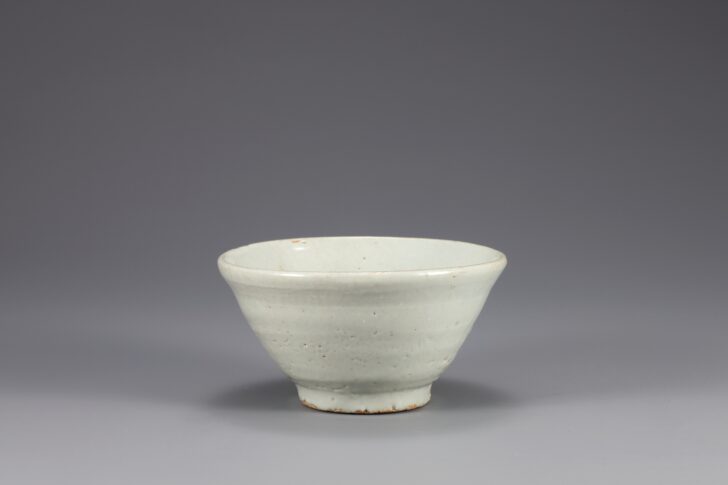Small bowl
Korean

Description
March 28, 2009
The Joseon dynasty abolished the state-sanctioned Buddhism of the Goryeo rulers and adopted Neo-Confucianism as the official doctrine. The new dynasty’s first great reformer, King Sejong, who reigned from 1419 to 1450, adopted plain white porcelain as the official ware, rejecting the celadon of the previous dynasty. With Neo-Confucianism came a new aesthetic of austerity, frugality, and pragmatism in the decorative arts.
This deep, thinly potted bowl (6) is typical of undecorated white porcelain produced for the Joseon court in the fifteenth century. Early wares such as this bowl are rare today and prized for their fine clay body, soft white color, and clear glaze. The generous volume and well proportioned form of this bowl reflect the Neo-Confucian ideals of the period.
The vast majority of undecorated Joseon porcelains—by one account, as much as ninety-five percent—are everyday dishes and bowls, such as this example (7). Produced at a provincial kiln, this bowl has a flaring mouth and steeply curving sides that taper down to a wide, stable foot. A ring of small scars on the glaze of the interior indicates that the bowl was fired in a stack. Like other bowls produced during the final days of the Joseon dynasty, the vessel walls are thicker, the clay body coarser, and the glaze a deeper blue than the pure white porcelain bowls of the early Joseon period. But true to its Neo-Confucian roots, this bowl retains the simple solid form and functionality of Joseon-period ceramics.
(Label for UMMA Korean Gallery Opening Rotation, March 2009)
Subject Matter:
This kind of bowl is presumed to be made in regional kiln because of a whole ring of spur marks on the interior bottom.
Physical Description:
Small porcelain bowl with thick vessel walls, somewhat coarse exterior, and bluish glaze.
Produced in a regional private kiln in the late 19th century, this white porcelain bowl is has a bright-colored clay body and a wide foot. Sand spur marks are left on the rim of the foot as well as on the inner base, because it was stacked among other bowls, separated by sand supports, in the kiln. It is coated with white opaque glaze and features many pinholes on the outer base due to crawling of glaze.
[Korean Collection, University of Michigan Museum of Art (2014) p.163]
Usage Rights:
If you are interested in using an image for a publication, please visit https://umma.umich.edu/request-image/ for more information and to fill out the online Image Rights and Reproductions Request Form.